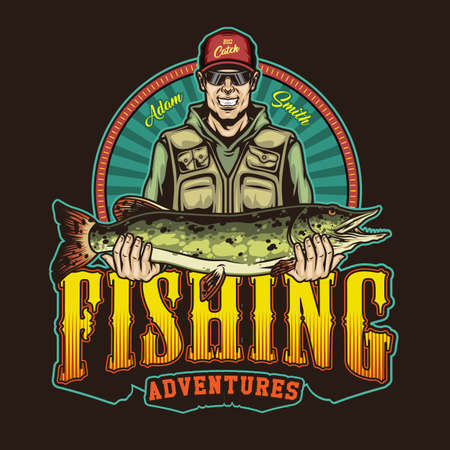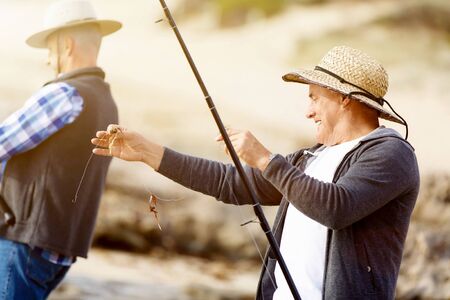Understanding the Needs of Young Anglers
When it comes to choosing the right fishing rod and reel setup for young anglers, understanding their unique needs is crucial. Kids are not just small adults—they have their own set of requirements that should be considered to make fishing fun and safe. One of the first factors to think about is age. Younger children generally need shorter and lighter rods that they can handle easily, while older kids might be ready for slightly longer or more advanced setups. Experience level also plays a major role; beginners benefit from simple, easy-to-use gear like spincast reels, which minimize tangles and frustration. On the other hand, if your child has been fishing for a while, you might consider introducing them to spinning reels or even baitcasters as they build skills. Finally, personal interest is key—pay attention to what excites your young angler. If theyre fascinated by catching bigger fish or trying out new techniques, choosing gear that matches those interests will keep them engaged and eager to learn. By taking these factors into account, you’ll set your child up for success and enjoyment every time you head out on the water together.
2. Choosing the Right Rod Type and Length
When it comes to selecting a fishing rod for young anglers, the type and length of the rod play a major role in both their learning curve and overall safety. There are several types of fishing rods, each designed for specific fishing techniques and environments. The most common choices for kids include spinning rods, spincast rods, and sometimes baitcasting rods, though baitcasters are typically better suited for older or more experienced children due to their complexity.
| Rod Type | Ease of Use | Best For | Recommended Age |
|---|---|---|---|
| Spincast Rod | Very easy | Beginners, general freshwater fishing | 5-10 years |
| Spinning Rod | Easy-moderate | Lakes, ponds, streams | 8+ years |
| Baitcasting Rod | Difficult | Larger fish, experienced youth anglers | 12+ years |
Choosing the right rod length is just as important. Shorter rods (4 to 5.5 feet) are ideal for younger children because they are lighter, easier to control, and reduce the risk of accidents. Longer rods can be harder for kids to manage and may lead to fatigue or mishaps on the water. A properly sized rod helps young anglers cast more accurately and safely while building confidence with every outing.

3. Selecting an Easy-to-Use Reel
When it comes to helping kids learn how to fish, choosing the right reel is a game-changer. The two most popular options for young anglers in the U.S. are spincast and spinning reels, each offering unique advantages for beginners. Spincast reels are often considered the easiest for kids to start with. They feature a closed-face design with a simple push-button release, making casting straightforward and minimizing tangles. Kids love them because they’re less intimidating and allow for quick mastery of basic fishing techniques. Parents appreciate their reliability and low-maintenance build, which means more time fishing and less time fixing gear.
On the other hand, spinning reels are slightly more advanced but still highly beginner-friendly. They have an open-face design that helps young anglers see how the line moves, promoting better understanding as their skills grow. Spinning reels offer smoother casting over longer distances and greater control when reeling in a catch. While they require a bit more coordination, many American families find that kids quickly adapt after a few practice sessions. Both types are widely available at sporting goods stores across the country, so you can easily pick up whichever style suits your child’s confidence level and learning curve.
Ultimately, whether you choose a spincast or spinning reel, prioritize ease of use and reliability. Making fishing fun and frustration-free for your child ensures they’ll want to spend more time on the water—and that’s what matters most.
4. Matching the Rod and Reel Setup to the Fishing Environment
When helping young anglers get started, it’s essential to match their rod and reel setup to the specific fishing environment and target species they’ll encounter. The right gear not only improves success rates but also keeps the experience fun and safe for kids. For example, fishing in a small pond for sunfish requires a much lighter setup than casting into the surf for striped bass. Consider both where you’ll be fishing and what you’re hoping to catch before choosing equipment.
Key Environmental Factors
Different fishing locations demand different gear qualities. Here are some key factors to keep in mind:
- Water Type: Freshwater environments like lakes and rivers usually call for lighter gear, while saltwater areas require rods and reels that can handle corrosion and stronger fish.
- Space and Casting Distance: Tight spaces with lots of trees or brush might be easier with shorter rods, while open water allows for longer rods and greater casting distance.
- Accessibility: Kids often fish from docks or shorelines, which can influence the length and style of rod best suited for them.
Selecting Gear Based on Target Species
The size and strength of the fish your young angler is aiming for should guide your gear selection. Heres a quick reference table to help match rod and reel setups to common environments and species:
| Fishing Location | Target Species | Rod Type & Length | Reel Type |
|---|---|---|---|
| Pond/Lake | Panfish, Bass, Trout | Spinning, 5-6 ft, Light-Medium | Spinning Reel (1000-2500 size) |
| River/Stream | Trout, Smallmouth Bass | Spinning, 5-7 ft, Ultralight-Light | Spinning Reel (1000-2000 size) |
| Pier/Dock (Saltwater) | Pinfish, Small Redfish | Spinning, 6-7 ft, Medium | Saltwater Spinning Reel (2500-3000 size) |
| Surf/Beach | Striped Bass, Bluefish | Spinning/Casting, 8-10 ft, Medium-Heavy | Larger Spinning/Casting Reel (4000+ size) |
Simplifying Choices for Kids
Younger anglers benefit from simple setups tailored to the environment. Avoid overly long or heavy rods that may cause fatigue or frustration. Opt for combos designed specifically for kids when possible—they’re generally balanced for smaller hands and lighter use. Always double-check local regulations on gear restrictions for youth anglers in your area.
5. Prioritizing Comfort, Safety, and Durability
When it comes to choosing the right fishing rod and reel setup for young anglers, comfort, safety, and durability should be at the top of your checklist. Lightweight rods and reels are especially important for kids, as they make casting and handling easier throughout a long day on the water. Look for setups with soft, ergonomic grips that fit comfortably in smaller hands—this reduces fatigue and ensures a more enjoyable experience.
Safety is another crucial factor to consider. Choose rods with rounded tips and snag-resistant guides to help prevent accidental injuries. Some youth fishing kits even feature tangle-free designs or have built-in safety mechanisms on the reel to avoid line backlash—a common frustration for beginners.
Durability matters too, especially when you’re shopping for gear that will stand up to drops, bumps, and the occasional tug-of-war with a fish. Opt for rods made from fiberglass or composite materials, which are tough enough to handle rough treatment without breaking easily. Reels designed with corrosion-resistant components are a smart choice if you plan on fishing in lakes, rivers, or even saltwater environments.
By prioritizing these features—lightweight construction for comfort, thoughtful safety elements, and rugged durability—you’ll set up young anglers for success while building their confidence on every fishing trip.
6. Helpful Accessories and Maintenance Tips
Outfitting young anglers with the right accessories can make their fishing experience safer, more enjoyable, and easier to manage. Must-have accessories include a comfortable fishing hat for sun protection, polarized sunglasses to reduce water glare, and a lightweight tackle box with basic gear like extra hooks, bobbers, sinkers, and kid-friendly lures. Consider adding a small first aid kit and insect repellent for longer trips. A landing net sized for children is also helpful for safely bringing in fish.
Maintaining fishing gear is essential for keeping it in top condition throughout the season. Teach young anglers to always rinse rods and reels with fresh water after use—especially if fishing in saltwater—to prevent corrosion. Remind them to dry everything thoroughly before storage and check that all pieces are clean and free of debris. Periodically inspect lines for frays or tangles, and replace them as needed. Store rods vertically or in a rack to avoid bending or breaking them. These simple habits will help ensure that your child’s fishing setup stays reliable and ready for every new adventure.


